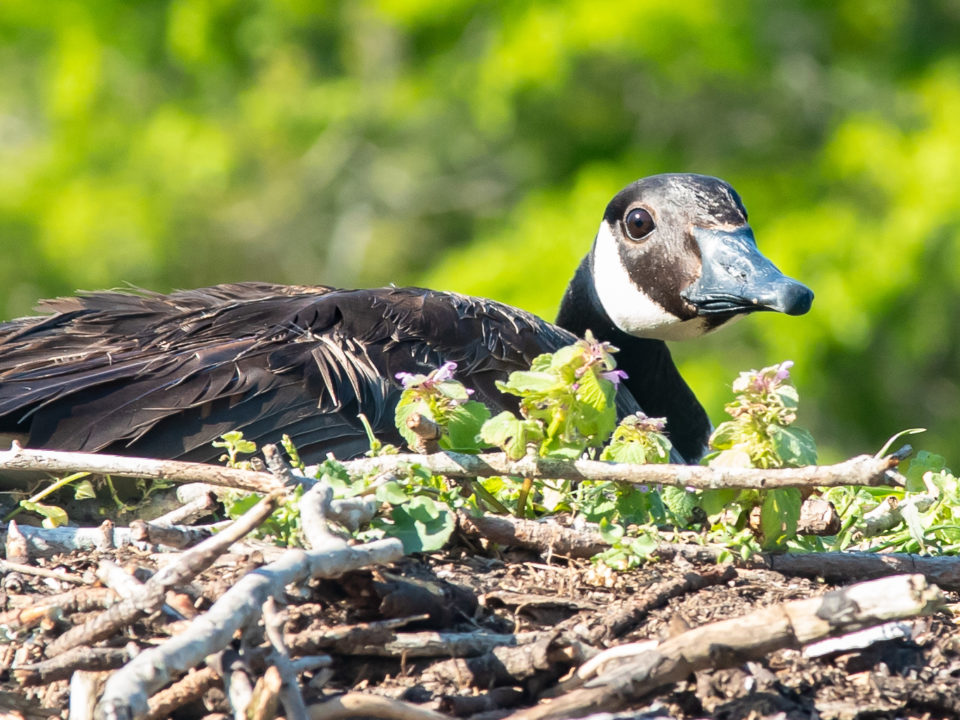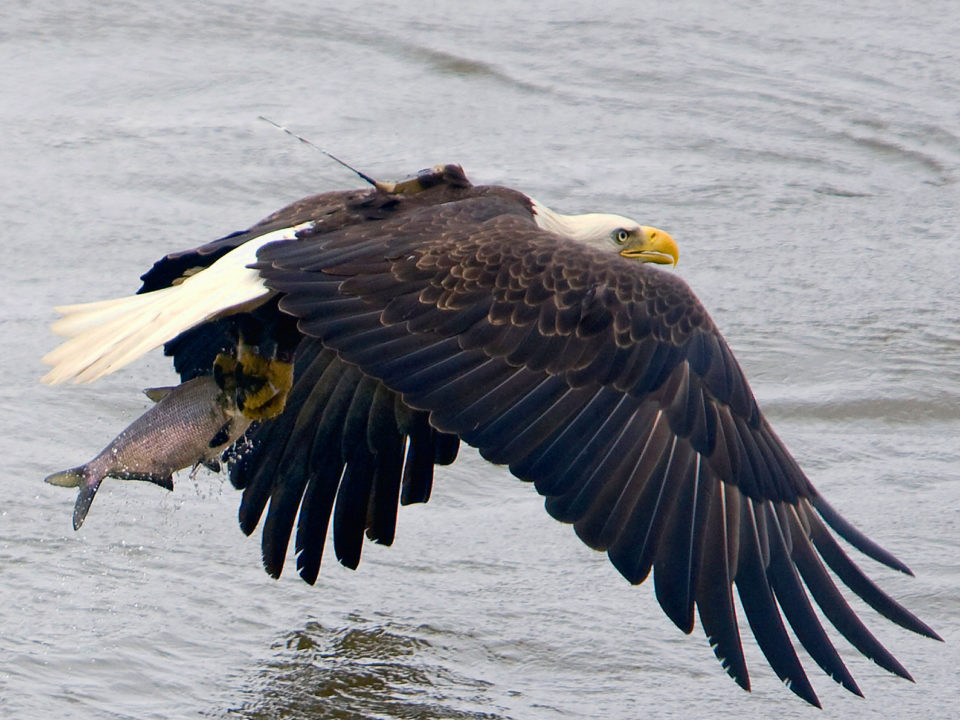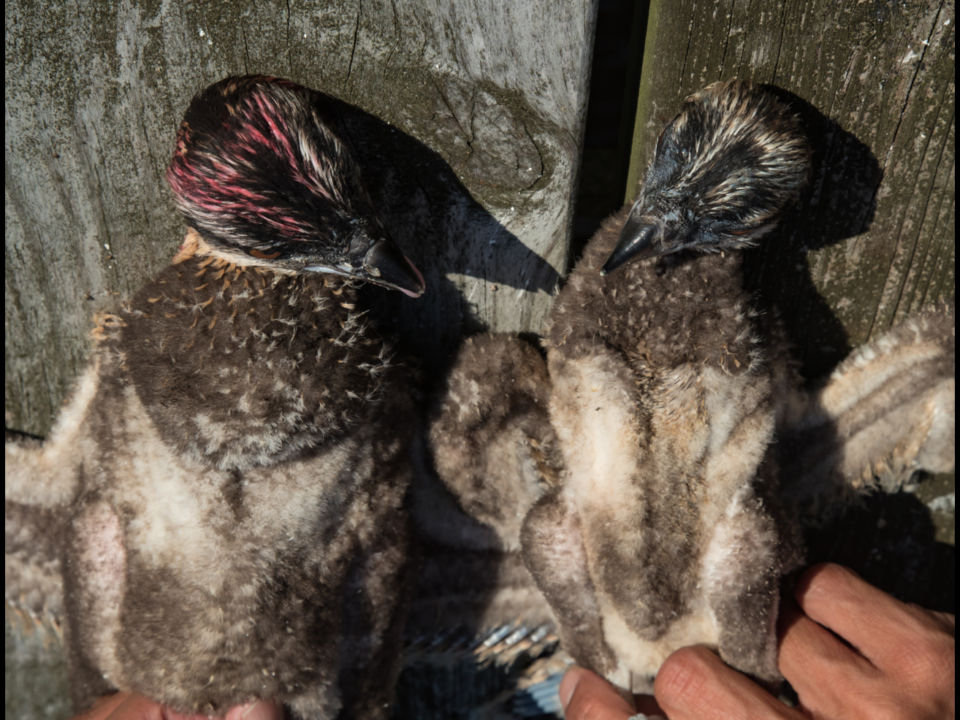Peregrines and Bridges
Spring weather dampens woodpecker season
September 30, 2016
Grace on James River at Chickahominy River Oct 1 2016
October 3, 2016
At first glance it doesn’t really seem like a great match, but after years of climbing three hundred foot lift towers and walking along high beams in all kinds of conditions, it is the view more than anything else that makes one almost expect to hear a screaming peregrine. Peregrines are drawn to great structures that offer spectacular views of the surrounding landscape. Historically, this meant cliff faces embedded within some of the grand land gestures of the world. They particularly like shear cliff formations near water where they are able to pluck prey from midair as the birds venture out over open water. In the flat lands of the Coastal Plain, bridges check two of the “like” boxes for peregrines and many of the most famous bridges across the globe have been colonized as peregrines have recovered over the past forty years.
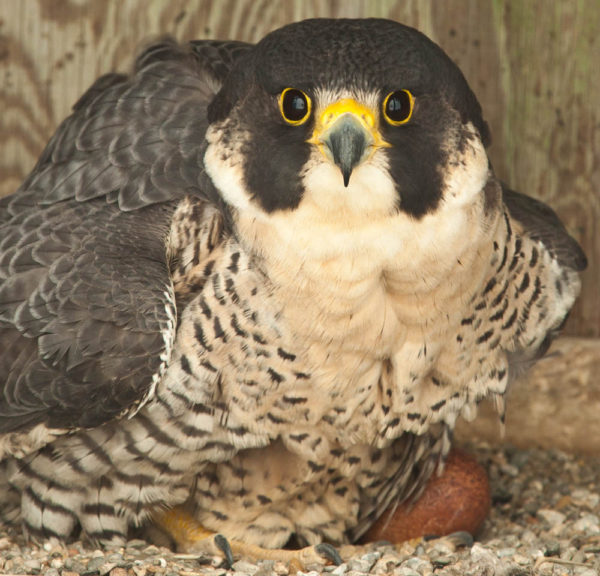
Female peregrine protecting her clutch on the James River Bridge in Virginia. Photo by Bryan Watts.
In Virginia, the relationship began in 1992 when a pair of falcons settled on a bridge across the York River and produced two young. Since that time peregrines have used fourteen different bridges in the state and those bridges have made a significant contribution to the recovery of the population. Over the past ten years, bridges have accounted for 26% of the young peregrines produced in the state.
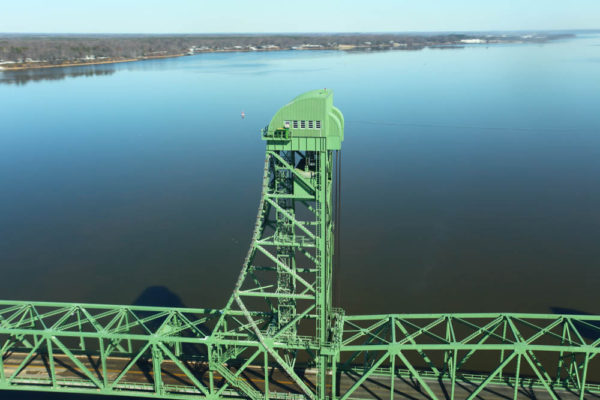
North lift tower of the Benjamin Harrison Bridge in Virginia where peregrines have nested for more than 15 years. Photo by Bryan Watts.
The Virginia Department of Transportation has been an essential partner in the recovery of peregrine falcons in Virginia. Both environmental and operational staff have adjusted maintenance schedules to accommodate falcon breeding, helped to maintain and relocate nesting structures, participated in annual monitoring, and assisted biologists in accessing and banding young. In 1998, the agency received the Federal Highway Administration’s Excellence Award in the category of Environmental Protection and Enhancements for their work to place peregrine nest boxes on bridges.
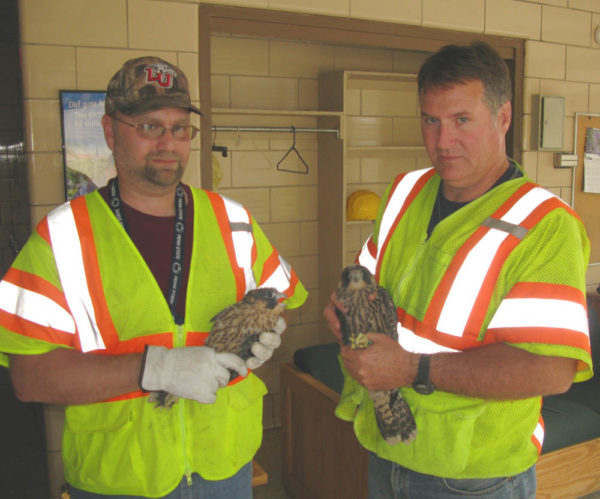
Dave Kurtich and Robert Hewitt handling young peregrines that were pulled from the Berkley Bridge in Norfolk, Virginia to be transported for release in Shenandoah National Park.
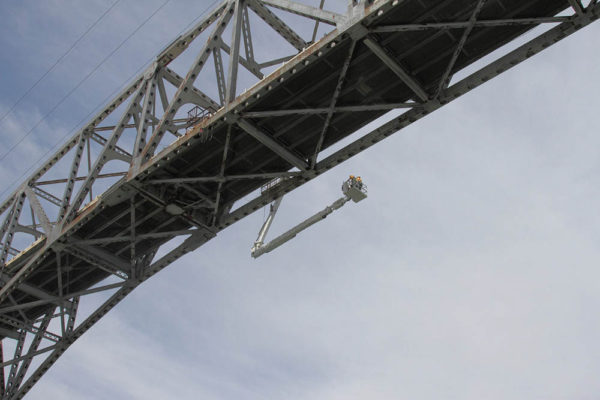
CCB and VDOT crew lowered in snooper truck under the Norris Bridge to collect young for banding. Photo by Bart Paxton.
Although bridges serve as surrogates for natural cliffs on the Coastal Plain, they are lacking one feature compared to the real thing. Winds that flow onto cliff faces produce updrafts that young peregrines just on the wing use to buoy them back up to their eyries. Winds flow through the infrastructure of most bridges and do not produce updrafts. The difference appears to increase the chance that young, inexperienced falcons will circle down into the water or onto lower bridge structures. Beginning in 2000, a program was initiated to move some of the young from bridges to the mountains for release. The effort has the dual objectives of increasing survival and recolonizing the historic mountain range.
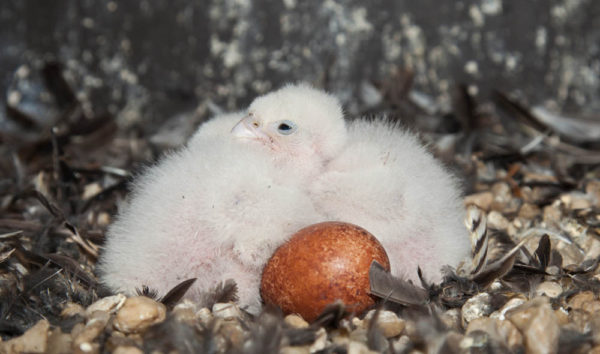
Young peregrine falcons huddle in the nest box on the Tappahannock Bridge in Virginia. Photo by Bryan Watts.
Peregrine falcon work in Virginia is a large partnership effort led by the Virginia Department of Game & Inland Fisheries, The Center for Conservation Biology, Virginia Department of Transportation, National Park Service, Dominion, The Nature Conservancy, NASA, and the U.S. Fish and Wildlife Service.
Written by Bryan Watts | bdwatt@wm.edu | (757) 221-2247
September 30, 2016
Related posts
A brood of osprey in Mobjack Bay showing a well-fed chick (left) and an emaciated chick (right). The chick on the right would die the following week due to starvation. Work in Mobjack Bay over a 40+ year period has shown that both reproductive rates and food delivery rates have declined dramatically. The decline in provisioning has led to an increase in brood reduction or chick loss due to starvation. Photo by Bryan Watts.

